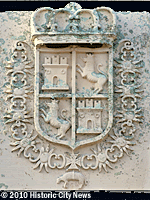 While some of the first things that come to mind when visiting St. Augustine are the great weather, white sand beaches and world-class golf courses, many people are not aware that the City shares a notable history with Florida that is older than Jamestown and Plymouth Rock.
While some of the first things that come to mind when visiting St. Augustine are the great weather, white sand beaches and world-class golf courses, many people are not aware that the City shares a notable history with Florida that is older than Jamestown and Plymouth Rock.
Although we will celebrate in November, 56 years before the Mayflower landed at Plymouth, the first Thanksgiving was celebrated in St. Augustine by Spanish explorers, not pilgrims. It was attended by the Spanish and a Timucuan Indian tribe on September 8, 1565.
Not only was the Sunshine State home to the first Thanksgiving, the first Christian Christmas was celebrated here by Hernando de Soto and his men in 1539.
Twenty years later, the first European settlement was attempted, but quickly failed, in August 1559. Six years later, Pedro Menendez would succeed in St. Augustine where Tristán de Luna had failed in Pensacola.
In 1565, the first enduring European settlement in North America was made at St. Augustine; making us America’s “oldest city”.
St. Augustine was also the first city in the continental United States to plot streets.
In 2109, Florida will finally be part of the United States for as long as it was ruled by Spain.
People first arrived in what is now known as Florida more than 12 millennia ago.
Most of Florida’s roads that were in use through the beginning of the 20th century were part of a transportation system developed by native people.
Here are a couple of other notable, but not well known, facts about our city.
The first recorded birth of an African American child in North America was at St. Augustine’s Fort Mose in 1607. Also, the first legally-sanctioned free black settlement in North America was at St. Augustine’s Fort Mose in 1738.
Photo credits: © 2010 Historic City News staff photographer
Discover more from HISTORIC CITY NEWS
Subscribe to get the latest posts sent to your email.
